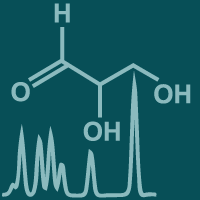Topic Menu
► Topic MenuTopic Editors

2. Department of Ophthalmology, School of Medicine, Keio University, 35 Shinanomachi, Shinjuku-ku, Tokyo 160-8582, Japan
Pathophysiology of Aging and Age-related Diseases
Topic Information
Dear Colleagues,
Oxidative stress is generated daily; however, when it exceeds the capacity of self-limiting mechanism, it causes decompensation of the tissue/organ function. The mechanism may be involved in tissue/organ functional disorders during physiological aging and pathogenesis of age-related diseases. In order to develop novel therapeutic approaches for treating and preventing age-related diseases, as well as preserve healthy aging, both of which lead to a better quality of life, this Interdisciplinary Topic pays special attention to the molecular mechanisms, biomarkers, epidemiology, therapeutic proof of concept, and clinical trials which could open up a new era in the medical fields of aging and age-related diseases.
We invite you to contribute an original paper or a review paper on recent novel concepts based on basic and/or clinical research to understand mechanisms of age-related diseases, metabolic syndrome, neurodegeneration, longevity, and so on.
Prof. Dr. Yoko Ozawa
Prof. Dr. Yasumichi Arai
Dr. Sumihiro Maeda
Topic Editors
Keywords
- aging
- age-related diseases
- metabolic syndrome
- inflammation
- epidemiology
- model animals and cells
- iPS cells
Participating Journals
| Journal Name | Impact Factor | CiteScore | Launched Year | First Decision (median) | APC |
|---|---|---|---|---|---|

Antioxidants
|
7.0 | 8.8 | 2012 | 13.9 Days | CHF 2900 |

Brain Sciences
|
3.3 | 3.9 | 2011 | 15.6 Days | CHF 2200 |

Medicina
|
2.6 | 3.6 | 1920 | 19.6 Days | CHF 1800 |

Metabolites
|
4.1 | 5.3 | 2011 | 13.2 Days | CHF 2700 |

MDPI Topics is cooperating with Preprints.org and has built a direct connection between MDPI journals and Preprints.org. Authors are encouraged to enjoy the benefits by posting a preprint at Preprints.org prior to publication:
- Immediately share your ideas ahead of publication and establish your research priority;
- Protect your idea from being stolen with this time-stamped preprint article;
- Enhance the exposure and impact of your research;
- Receive feedback from your peers in advance;
- Have it indexed in Web of Science (Preprint Citation Index), Google Scholar, Crossref, SHARE, PrePubMed, Scilit and Europe PMC.



